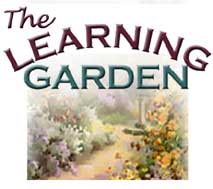
From Seed to Seed:
Plant Science for K-8 Educators
 |
From Seed to Seed: |
|
|
Activity 13: Leaf Peepers Grades: 5-8 Associated Lesson Topics:
National Standards:
Planting the Seed... Do all leaves look the same? Pass around some different types of leaves. What words would you use to describe these leaves? their edges? their surface? their vein patterns? their shape? Teacher Information: Although they seem quite simple, there are many ways to describe leaves. And an infinite number of different kinds of leaves exist in the natural world. In this activity, students will learn about the characteristics of leaves by looking at and comparing several different types. They will also learn how botanists, like Linnaeus, used these characteristics to classify plants by creating their own dichotomous key. Dichotomous keys are keys that offer two-and only two-alternatives at each choice. Here are some rules for creating a dichotomous key: 1) The alternatives should be directly comparable, allowing for a single, clear choice to be made:
The second set of alternatives considers different characteristics. It
is possible for a leaf to be hairy and serrated. Which characteristic
would you pick?
2) When designing a key, subjective characters should be avoided:
3) The chosen characteristics should be consistent between individuals.
If a sample leaf has a nick out of the corner, this should not be used
as a characteristic. Students can determine the consistent characteristics
by looking at more than one leaf. 4) The plant part in question should always be listed first:
While there are certain rules for making a dichotomous key, students still have quite a bit of freedom to be creative. However, at this level of detail it is possible for a set of alternatives to be accurate for two or more different species of leaves. Therefore, students need to double-check that individual keys in their guide do not allow for the improper identification of one another's leaves. Below is a sample dichotomous key to use for reference.
1. Leaves simple
3. Leaves opposite..........................................Red maple 2. Leaves serrated.......................................................Birch 1. Leaves compound 4. Leaves three leaflets...............................................Common hoptree 4. Leaves five to seven leaflets..................................Ohio buckeye Necessary Materials:
*A note on field guides: Many field identification guides provide so much information that students easily become frustrated or are quickly misled. Be sure to choose an age-appropriate field guide. This is a difficult task. Below are a few suggestions for where to find field guides for different ages. Procedure:
Harvesting the Crop... Why do you think there are so many different kinds of leaves? How do you think the different features of leaves might help plants? What do you think the purpose of a leaf is? Could the differences among leaves help them to do their job more effectively? Compare leaves found locally to pictures of leaves in another ecosystem-a rainforest, for example-and question students about the differences they see. What do you notice when you compare the leaves from these two ecosystems? Why might leaves in the rainforest be so large? Sources
|
||||||||
|
Made possible by a grant from Oracle Corp. Copyright 2001, National Gardening
Association, Inc. For questions regarding this web site, contact Webmaster |